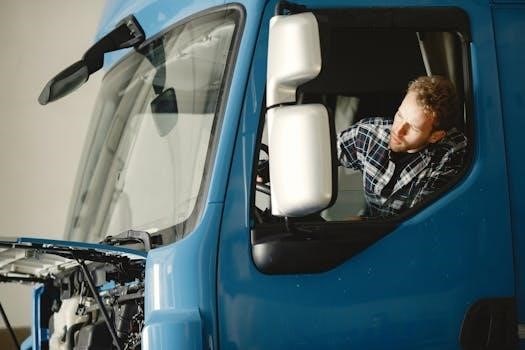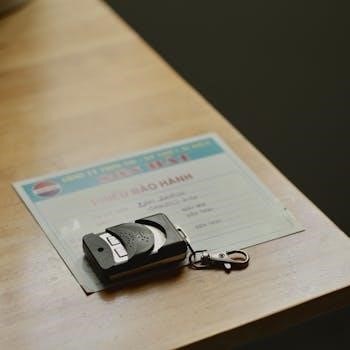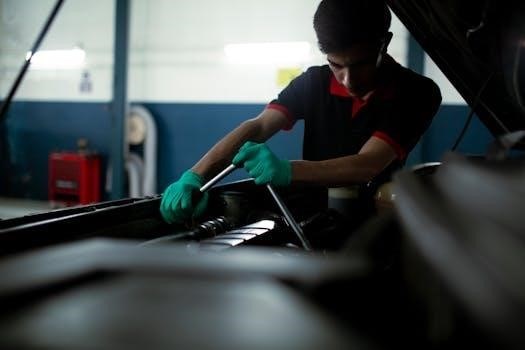
amana washer troubleshooting manual
Understanding Common Amana Washer Problems
Experiencing issues with your Amana washer? Don’t worry! Many problems have simple solutions. This guide helps you understand common issues like spinning problems‚ unusual noises‚ or getting stuck on sensing fill‚ and more.
Troubleshooting Steps for Common Issues
Before calling a technician‚ try these troubleshooting steps. This guide offers solutions for issues such as not spinning‚ loud noises‚ or draining problems. Addressing these issues yourself may save money and time.
Washer Won’t Spin
If your Amana washer refuses to spin‚ don’t panic! Several issues can cause this problem‚ and many have simple solutions. First‚ check for a broken belt or loose drain hose‚ common culprits behind a washer not spinning. Consult the manufacturer’s instructions.
If the belt appears damaged or the drain hose is loose‚ these components may need repair or replacement. Ensuring proper installation is crucial for optimal performance. Additionally‚ unbalanced loads can prevent spinning. Redistribute items evenly within the drum;
Also‚ excessive suds from using non-HE detergent can hinder the spin cycle. Always use HE detergent in the correct amount. By systematically addressing these potential causes‚ you can often restore your washer’s spinning function without professional help.
Washer is Making Loud Noise
A noisy Amana washer can indicate several underlying issues. Rattling‚ banging‚ or tapping sounds often stem from the drain or water inlet hoses knocking against the washer cabinet’s rear. Securing these hoses can resolve this.
Unbalanced loads are another common cause of excessive noise. Ensure that the load is evenly distributed within the drum to prevent the washer from vibrating excessively. Check for any foreign objects‚ like coins or buttons‚ trapped within the drum or the pump area‚ as these can create loud noises during operation.
If the noise persists‚ inspect the washer’s components‚ such as the motor or bearings‚ for wear or damage. Addressing the root cause of the noise will not only quiet your laundry routine but also prevent further damage to your appliance.
Washer Gets Stuck on Sensing Fill
If your Amana washer is stuck on the “Sensing Fill” stage‚ it indicates a problem with the water inlet or the sensing mechanism. First‚ ensure that the water supply hoses are properly connected and the water valves are fully open. Insufficient water pressure can prevent the washer from filling correctly‚ causing it to remain in the sensing mode.
Check the water inlet valve for any clogs or debris that may be obstructing the water flow. Clean the valve screen to remove any build-up. A faulty water level sensor can also cause this issue. If the sensor is not detecting the water level accurately‚ the washer will continue to try to fill‚ getting stuck.
If the problem persists‚ consulting a professional technician is advisable to diagnose and repair the sensing system.
Washer Not Draining
A washer that won’t drain can be frustrating. The first step is to inspect the drain hose for kinks or blockages. Ensure the hose is properly connected and not clogged with lint or debris. Check the drainpipe height; it should be at the recommended level to allow for proper drainage.
The drain pump is another common culprit. A failed drain pump or an obstruction within the pump can prevent the washer from draining. Listen for any unusual noises coming from the pump during the drain cycle. If the pump is making noise but not draining‚ there may be an object trapped inside. Access the pump and remove any obstructions.
If the washer still fails to drain‚ the issue might be with the water level control or a faulty electronic control board. These components regulate the draining process. Consulting a qualified technician might be necessary to diagnose and repair these more complex issues.
Washer Not Starting
If your Amana washer refuses to start‚ begin by verifying the power supply. Ensure the washer is plugged into a grounded‚ three-prong outlet and not an extension cord. Check the circuit breaker or fuse box for any tripped breakers or blown fuses. Reset or replace as needed.
Next‚ examine the lid switch or door lock. The washer will not start if it doesn’t detect that the lid or door is properly closed and locked. Make sure that there aren’t any obstructions.
A faulty timer or electronic control board can also prevent the washer from starting. These components control the start and operation of the appliance. If you suspect a problem with either of these components‚ it might be wise to consult a skilled specialist to do more investigation and possible repairs.

Addressing Error Codes
Error codes provide valuable insights into your Amana washer’s problems. Refer to your user manual to decipher the specific code and follow the recommended troubleshooting steps for resolution.
Understanding Control Lock (LoC or LC)
If your Amana washer’s control panel seems unresponsive‚ and you see “LoC” or “LC” displayed‚ the Control Lock feature is likely activated. This safety feature prevents accidental changes to settings‚ particularly useful with children around. When engaged‚ all buttons become temporarily disabled.
To deactivate the Control Lock‚ consult your washer’s manual for the specific button combination or procedure. Typically‚ it involves pressing and holding a designated button (or buttons) for a few seconds. Once deactivated‚ the “LoC” or “LC” display will disappear‚ and you can resume normal operation. If the code persists‚ double-check the manual and try again. If problems continue‚ seek help.

Proactive Maintenance Tips
Preventative maintenance can extend the life of your Amana washer. Proper detergent usage and regular cleaning are crucial. These simple steps help avoid future problems and keep your washer running smoothly.
Using HE Detergent Correctly
High-Efficiency (HE) detergents are essential for your Amana washer. Using non-HE detergent‚ or using too much detergent‚ can lead to issues. Excess suds can interfere with the washer’s operation‚ causing it to run at reduced spin speeds. This results in clothes that are still wet after the cycle finishes.
Always use the amount of HE detergent recommended by the manufacturer. More isn’t always better; in fact‚ it can cause problems. HE detergents are formulated to produce fewer suds while still effectively cleaning your clothes. Non-HE detergents create excessive suds‚ which can affect the washer’s performance and potentially damage the machine over time.
Ensure you’re using the correct type and amount of detergent to keep your Amana washer operating efficiently and extending its lifespan. Refer to your washer’s manual for specific detergent recommendations.
Cleaning the Washer Cycle
Regularly cleaning your Amana washer is crucial for maintaining its performance and preventing odors. Most Amana washers have a dedicated “Clean Washer” cycle. If your washer has this cycle‚ use it monthly to keep the machine fresh and clean. To use the cleaning cycle‚ add a washer cleaner tablet or liquid chlorine bleach to the dispenser.
For washers without a specific cleaning cycle‚ run a normal cycle with hot water and a cup of white vinegar. This helps remove residue and buildup. Leave the washer door slightly ajar after cleaning to allow it to air dry completely. This prevents mildew and odors from forming. Additionally‚ clean the detergent dispenser regularly to remove any accumulated residue.
By incorporating these cleaning practices into your routine‚ you can ensure your Amana washer remains in top condition‚ providing you with clean and fresh laundry for years to come.

When to Call a Professional
While many Amana washer issues can be resolved with DIY troubleshooting‚ some problems require professional expertise. If you’ve exhausted all the troubleshooting steps and the washer still isn’t functioning correctly‚ it’s time to call a qualified appliance repair technician. Complex issues such as a malfunctioning electronic control board‚ a defective timer‚ or internal mechanical failures are best left to professionals.
Attempting to fix these issues yourself could lead to further damage or even personal injury. Additionally‚ if your washer is still under warranty‚ attempting unauthorized repairs may void the warranty. A professional technician has the knowledge‚ experience‚ and specialized tools to diagnose and repair the problem safely and effectively. They can also identify any underlying issues that may be contributing to the problem.
Don’t hesitate to seek professional help when needed to ensure your Amana washer is repaired correctly and safely.
Checking Electrical Connections and Supply
Before diving into complex troubleshooting‚ ensure your Amana washer receives proper electrical power. A faulty connection is a common reason a washer won’t start. First‚ confirm that the power cord is securely plugged into a grounded‚ three-prong outlet‚ avoiding extension cords. Extension cords can cause voltage drops‚ hindering performance.
Next‚ check your home’s circuit breaker or fuse box. A tripped breaker or blown fuse could be interrupting power to the washer. Reset the breaker or replace the fuse if necessary. If the breaker trips repeatedly‚ consult an electrician‚ as it may indicate a larger electrical issue.
Also‚ inspect the power cord for any damage‚ such as cuts or fraying. A damaged cord poses a safety hazard and should be replaced immediately. If the outlet seems faulty‚ test it with another appliance to confirm it’s providing power. Addressing electrical supply issues can often resolve starting problems.

Balancing Loads Properly
An unbalanced load is a frequent cause of washer problems‚ especially with Amana top-load models. Uneven weight distribution can lead to excessive vibrations‚ noise‚ and even prevent the washer from spinning correctly. To avoid this‚ distribute clothes evenly inside the drum.
Avoid washing single heavy items like rugs or blankets alone‚ as they tend to concentrate weight on one side. Instead‚ pair them with similar items to balance the load. When washing smaller loads‚ arrange the clothes around the agitator to ensure even distribution. If you notice the washer shaking excessively during the spin cycle‚ pause the machine and redistribute the load.
Also‚ be mindful of the type of items you’re washing together. Mixing heavy and light items can create imbalance. By taking the time to load your washer carefully‚ you can prevent many common issues and ensure optimal performance. Remember‚ a balanced load is a happy load!


Leave a Reply
You must be logged in to post a comment.